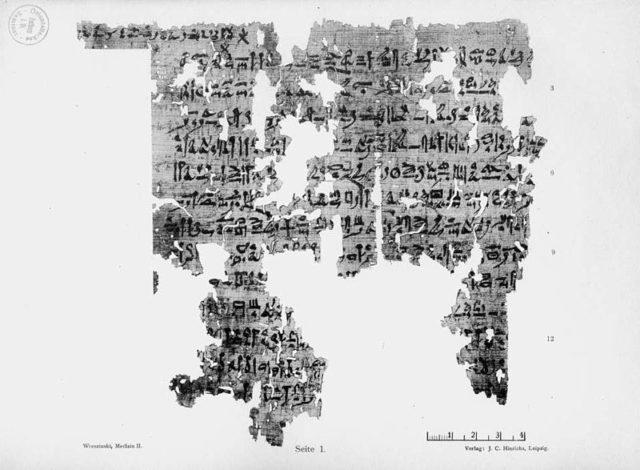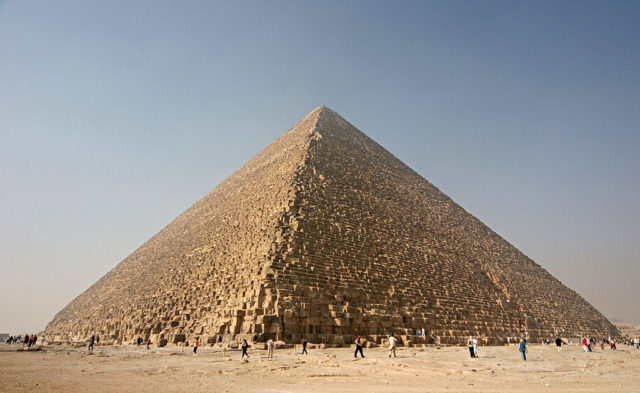The oldest papyrus ever discovered, thought to be the diary of a pyramid builder, has revealed exclusive details about the Egyptian workers who worked tirelessly to create the greatest wonder of the ancient world.
The document also listed the diet of the laborers, revealing facts such as how much meat they ate. The discovery of the papyrus records about the workers is set to shed more light on the secrets of the Great Pyramid of Giza.
The Egyptian Museum in Cairo has begun the process of putting the oldest papyri on display; these documents date back some four and half millennia and contain the details about the daily routine of the pyramid laborers.
The artifacts discovered are believed to have come from the Fourth Dynasty of Pharoah Khufu, also referred in history as Cheops; the great pyramid of Giza was in fact built as a tomb for Cheops.
The writings reveal various aspects of the daily lives of the workers who transported massive blocks from the sea to Cairo during the construction of the Great Pyramid, which was to be the burial structure of the Pharoah.

At the unveiling of the exhibition, Egypt’s Antiquities Minister, Khaled El-Anany, said that the papyruses were first uncovered in 2013 during a joint venture between French and Egyptian missions from the caves at the port of Wadi El-Jarf.
The port, which was fully functional 4,500 years ago, is located 74 miles from the city of Suez and is a great historical site. El-Anany also added that the recently discovered records are so far the most ancient of their kind ever discovered in the history of Egyptology.

Egyptologists have long tried to uncover the many mysteries surrounding the location and design of the pyramids in Egypt. There is no shortage of speculations about the multifaceted purposes behind the building of such towering structures in the middle of the desert.
These discoveries open up new avenues into the understanding the psychology of the men who worked tirelessly to achieve this marvel of human ingenuity.
One of the documents discovered is the diary of a government official called Merer; the diary contains details of statistics and administrative details regarding his work as a government official. Another papyrus is believed to be from a senior employee named simply as Marr, who played a crucial role in building the pyramids (perhaps overseeing the construction).
The documents are full of his official duties and orders spanning over three months. According to the records, his primary responsibilities include enabling the smooth transportation of rocks through the canals and River Nile. These stones were later refashioned according to their place in the pyramid and were then added to the structure.
